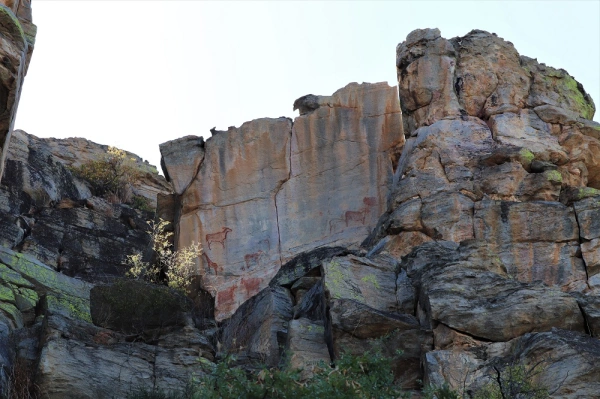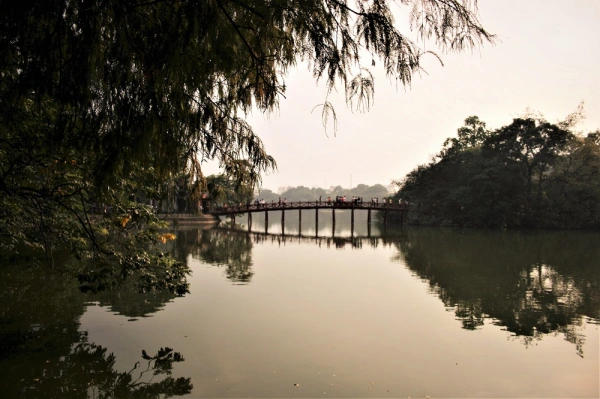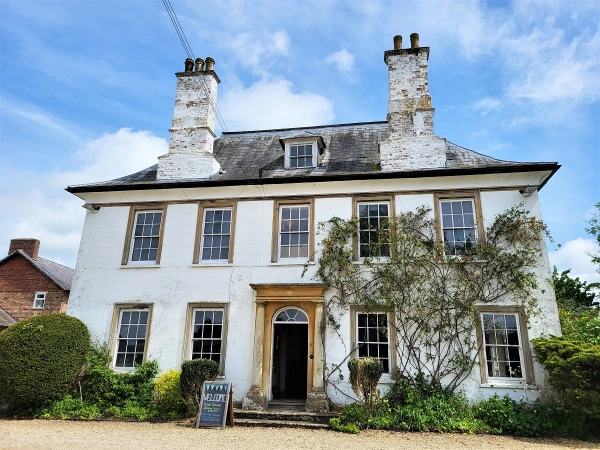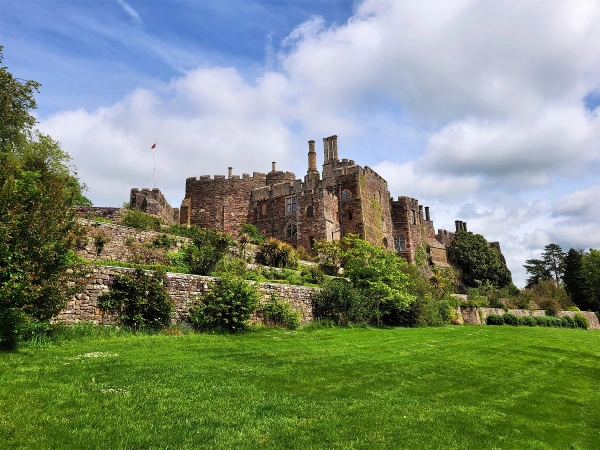Our final destination in Botswana was the Xakanaxa region in Moremi Game Reserve, where we spent two nights wild camping. On our first full day in the area, we were up once again at 6am and out of the camp by 6.50am for an early morning game drive. It wasn’t long before we spotted our first signs of wildlife – two lion brothers in the grass. We watched on in awe as the pair came together, played briefly, then went their separate ways. Not long afterwards, we spotted an enormous flock of birds in a pool of water in the…
-
-
Our time in the Moremi Game Reserve couldn’t have been more different to our experience in Savuti. Whereas Savuti was dry, dusty and quiet on the wildlife front, Moremi Game Reserve was lush, wet and teeming with birds and animals. We spent two nights camping near the Khwai River, before moving onto Xakanaxa in another part of the reserve. On our first full day in Moremi, we were up at 6am and out for our first game drive by 7am. It didn’t take long before we spotted our first signs of wildlife – four giant hornbills by the side of…
-
Chic, laid-back, friendly, welcoming and playful are just some of the words I’d use to describe the historic French city of Nantes. The former capital of Brittany (it’s called Naoned in Breton) has been dubbed the ‘city of the dukes of Brittany’. Even though it hasn’t been part of Brittany since the Second World War when the boundaries were changed (it’s now the capital of the Pays de la Loire region), it still retains a distinctly Breton charm. The walkable city, which is situated on the banks of the River Loire and is home to more than 600,000 people, boasts…
-
When we were looking for somewhere to have dinner in Victoria Falls Town, one name came up time and again – the Dusty Road Township Experience. Described as a Zimbabwean cultural experience, the restaurant was opened in 2019 by Sarah Lilford, a fourth generation Zimbabwean, and offers diners a set tasting menu of traditional Zimbabwean dishes for US$35. Lunch is also available for US$24 a head. Our dinner started with shots of three welcome drinks – a tamarind, munyii berry and rosella iced tea (below); utshwala, a type of local beer; and maheu, a maize-based energy drink. The drinks proved…
-
Nothing can quite prepare you for the awe-inducing sight that is southern Africa’s mighty Victoria Falls. The waterfall, which is known as Mosi-oa-Tynua (‘the smoke that thunders’) in the local Sotho language, is a roaring, powerful spectacle and one of the great natural wonders of the world. It’s formed by the 1.7m-wide Zambezi River (below) as it cascades over a 300ft gorge, making it the largest waterfall in the world. It’s estimated that at the height of the rainy season, between February and May, some 500 million cubic metres of water tumble over the gorge every minute. Victoria Falls is…
-
If you want to see elephants in the wild, look no further than Chobe National Park. The 11,700 sq km park in north-western Botswana is home to some 35,000 elephants, the highest concentration of the pachyderms in the world. The sprawling park was opened in 1968, making it Botswana’s first national park, and it has a diverse range of habitats. The area around the Chobe River is home to the park’s biggest concentration of animals. There, alongside the aforementioned elephants, you’ll find giraffes, vervet monkeys, lions, crocodiles, impala, kudu, zebra and more. The park is also home to more than…
-
One of the most archaeologically significant and sacred sites in southern Africa, the captivating Tsodilo Hills are adorned by more than 4,500 rock paintings, painted by the San and Bantu peoples over thousands of years. Lying on the western edge of the Kalahari Desert, you can’t miss the hills, a series of four monumental rocks that dominate the otherwise flat, barren landscape. A UNESCO World Heritage Site since 2001, archaeologists estimate that Tsodilo has been occupied by humans for some 100,000 years and it’s long been revered by the people who live here. The San people believe it was the…
-
From awe-inspiring scenery to ancient ruined complexes, traditional temples and stark reminders of the Vietnam War, there’s lots to experience in Vietnam. Add to the mix, an incredibly friendly people, rich culture and tasty food, and it’s no wonder the country has become such a popular destination with travellers in recent years. Everyone I know who’s visited Vietnam seems to have done the traditional north to south route through the country – starting in Hanoi and finishing in Ho Chi Minh City. It’s the same route I took when I visited the country. So if you’re thinking of visiting Vietnam…
-
While I was at Berkeley Castle, I learned that Dr Jenner’s House was just a five minute walk away. So after looking around the castle, I walked over to the house, as I was keen to see where the ‘father of immunology’ had lived and worked. Dr Edward Jenner was born in Berkeley in 1749, the son of a local vicar, and after finishing his medical training in London, he returned to the Gloucestershire town. He bought his house, The Chantry, in 1785 and lived there with his wife Catherine and their family. In 1796, Dr Jenner cemented his place…
-
As the site of one of the most infamous maybe-murders in English history, it’s safe to say I’d been dying to visit Berkeley Castle in Gloucestershire for quite some time. Despite being only an hour’s drive from Cardiff, I had, for some inexplicable reason, never been before. So when I had a week off work in May, I was determined to finally put that right. Situated in the charming town of Berkeley, just a stone’s throw from the River Severn, the 12th century castle is one of the oldest buildings in England still inhabited by the same family. The castle…










